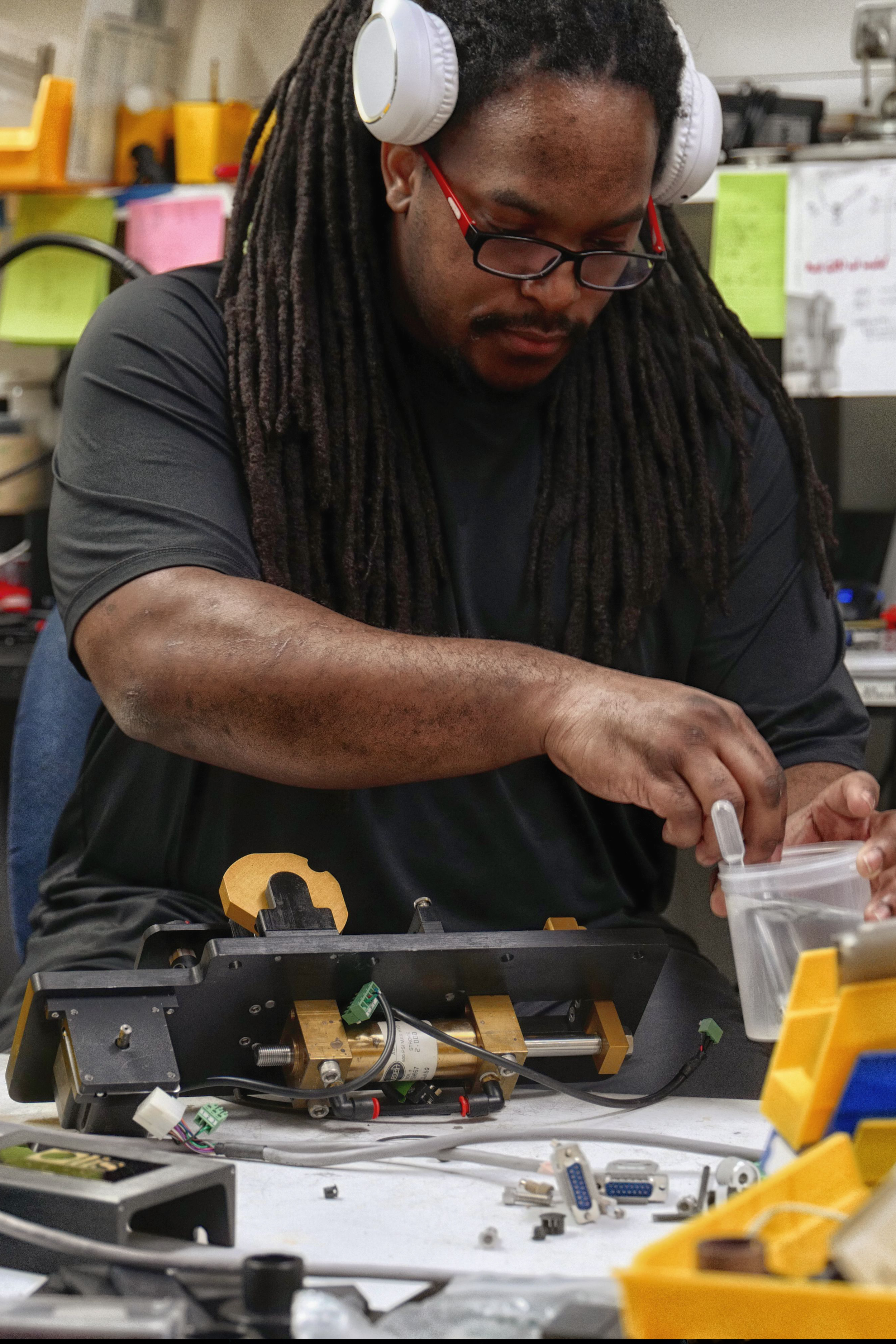8 Easy Facts About Olis Clarity Explained
Wiki Article
3 Simple Techniques For Olis Clarity
The selected wavelength of light is after that passed with the sample. The detector(Photometer) gauges the quantity of light soaked up by the sample.
The transmittance is the amount of light that passes through the sample divided by the amount of light that beams on the sample. The reflectance is the quantity of light shown by the sample split by the quantity of light that radiates on the example. A can be made use of to recognize unidentified substances, measure the concentration of well-known compounds, and study the communication between light and issue.
The shade of the beverages can likewise be measured and used to ensure harmony. Food evaluation is one more usual usage.
Not known Details About Olis Clarity

Color analysis of structure items is an additional typical usage. The whiteness of paint, the reflectivity of aluminum siding, and the brightness of paper can all be gauged. For chemical shade analysis, It can be made use of to measure the absorbance of light by an option. It can then determine the focus of a certain chemical in that remedy.
There are also lots of uses in research. Other applications consist of environmental screening, medical diagnosis, and forensics. The basic means a spectrophotometer functions is by having a light luster with a sample. The light that travels through the sample is after that identified and measured. The quantity of light taken in, sent, or reflected by the sample is after that calculated.
It can make use of the shades of the spectrum to recognize various materials. If a material soaks up all the light that strikes it and doesn't show it, we see that material as black. The contrary happens with compounds that look white -they mirror all the noticeable light striking them. In between those 2 are materials that show specific wavelengths of light and absorb others, producing different shades.
What Does Olis Clarity Do?
They can additionally be utilized to measure a wide selection of compounds. The absorbance of light by a solution can be gauged and utilized to determine the focus of a specific chemical in that solution.
A spectrometer is a term made use of for any type of tool that is utilized to study, recognize and analytically determine electro-magnetic radiation that is discharged by a material, in order to recognize the elemental make-up of a product - spectrophotometers. In X-ray fluorescence (XRF) spectrometry, samples are swamped with high-energy X-rays to discover out what a product is composed of
Although the XRF tools hold lots of strengths, like any type of machine or tool, they need normal maintenance in order to guarantee an ideal efficiency. When a spectrometer is calibrated, it makes certain the tool is 'held up to no' and that no problems are existing. Any type of flaws will influence the reliability and accuracy of the data given by the spectrometer, and consequently will provide inaccurate results.
The Main Principles Of Olis Clarity
If harmed, unused or left uncontrolled for lengthy durations of time, it is much more most likely that a spectrometer will certainly have 'drifted', hence the relevance of normal calibration checks. Wandering can be highlighted if the spectrometer is giving a series of results for one compound, and is for that reason offering readings that are inaccurate.
Wander screens are utilized to establish the security of an XRF spectrometer. They can find the smallest of problems, which is vital to making certain the tool is performing at optimum level and providing reliable results. At XRF, we have a huge deepness of knowledge of example preparation and top quality assurance in spectroscopy, and our displays have been developed based upon years of proficiency in creating products for XRF spectroscopy.

Ultraviolet-visible (UV-Vis) spectroscopy is an extensively utilized technique in many areas of scientific research ranging from bacterial culturing, medicine identification and nucleic acid pureness checks and quantitation, to quality assurance in the beverage industry and chemical study. This short article will certainly define just how UV-Vis spectroscopy works, just how to examine the outcome information, the method's strengths and limitations and several of its applications.- Source of light- Wavelength selection- Example analysis- Discovery, UV-Vis spectroscopy is an analytical method that measures the amount of distinct wavelengths of UV or noticeable light that are absorbed by or sent through an example in contrast to a recommendation or blank example.
The Ultimate Guide To Olis Clarity
Since this spectroscopy technique depends on the use of light, allow's first take into consideration the buildings of light. Light has a certain amount of energy which is vice versa proportional to its wavelength. Therefore, shorter wavelengths of light bring more energy and longer wavelengths lug much less energy. A particular amount of power is required to advertise electrons in a material to a greater power state which we can spot as absorption. spectrophotometers.
This is why the absorption of light happens for different wavelengths in different materials. see https://anotepad.com/note/read/ts3wwaxq. Human beings are able to see a spectrum of visible light, from around 380 nm, which we view as violet, to 780 nm, which we view as red. 1 UV light has wavelengths much shorter than that of visible light to around 100 nm
Xenon lights are, nonetheless, linked with greater expenses and are much less steady in comparison to tungsten and halogen lights. For tools using 2 lights, a tungsten or halogen light is commonly utilized for noticeable light, whilst a deuterium light is the typical source of UV light. As 2 various light resources are needed to scan both the UV and visible wavelengths, the light source in the instrument must switch throughout measurement.
Report this wiki page